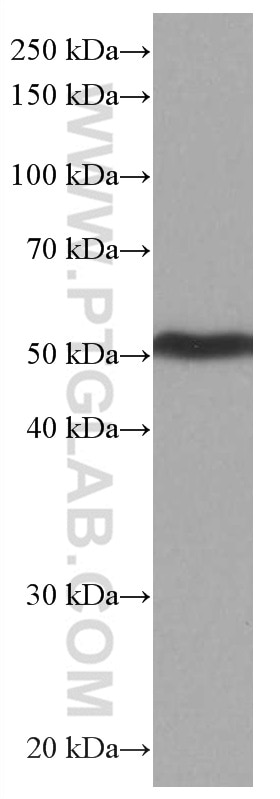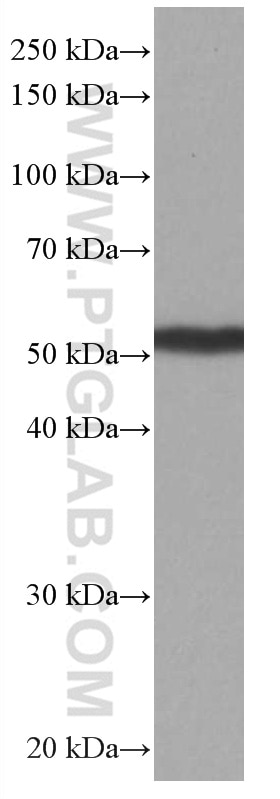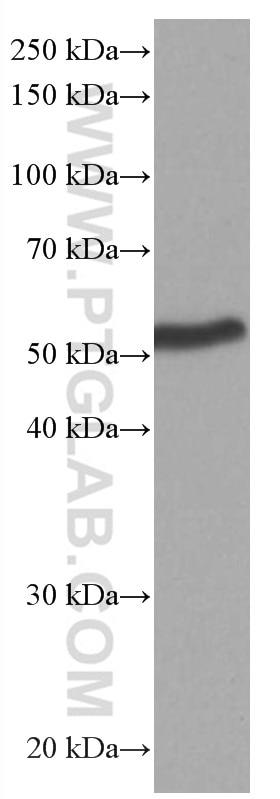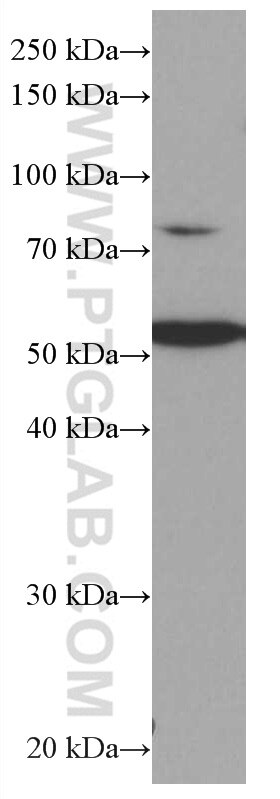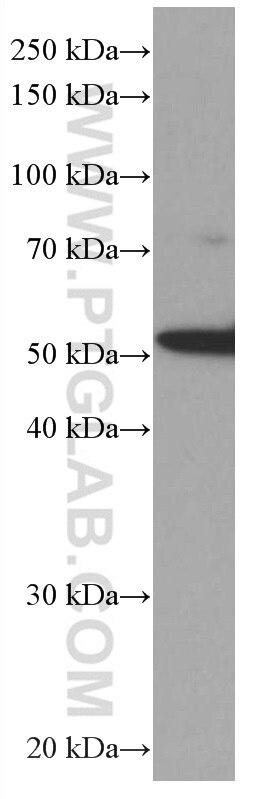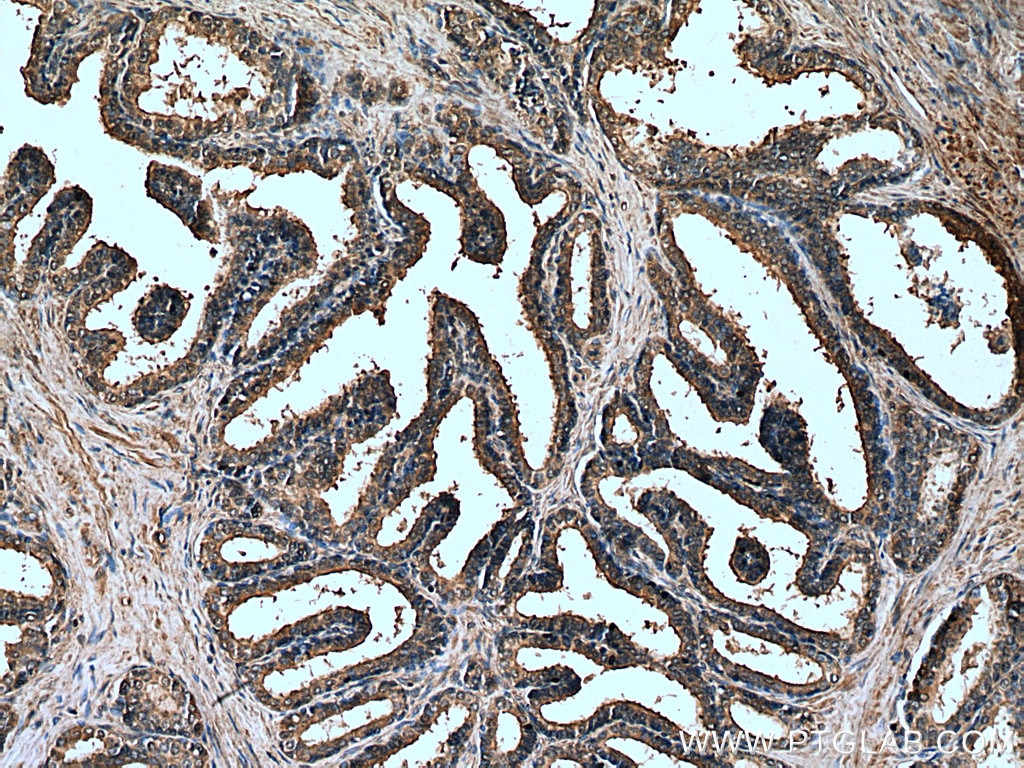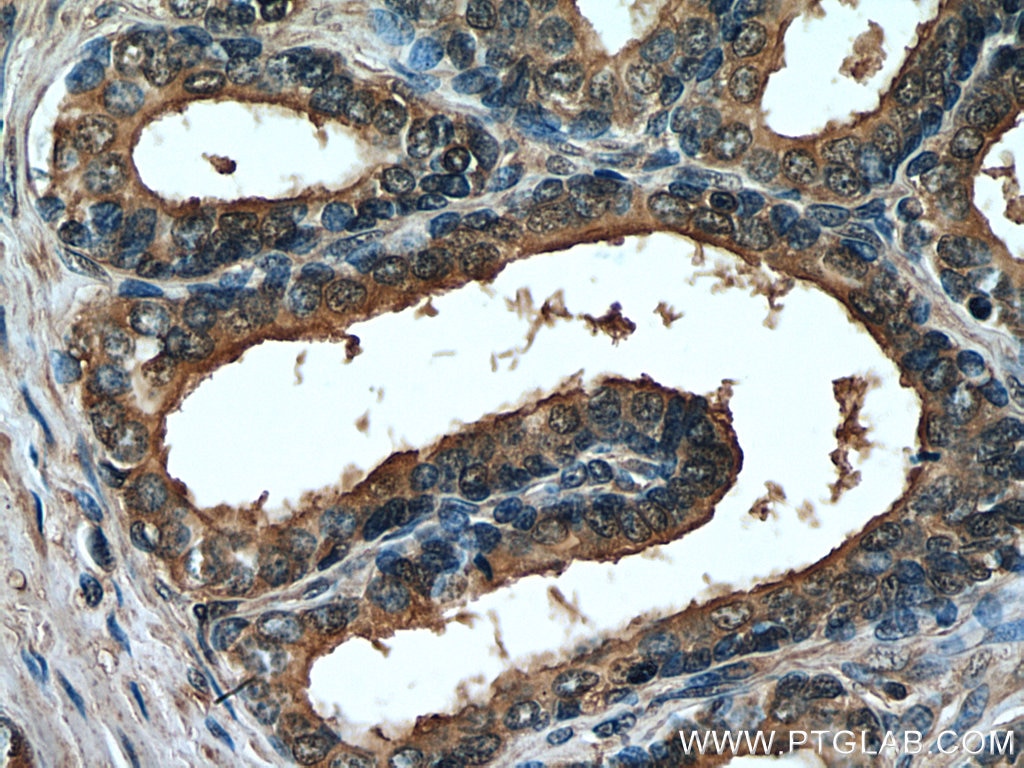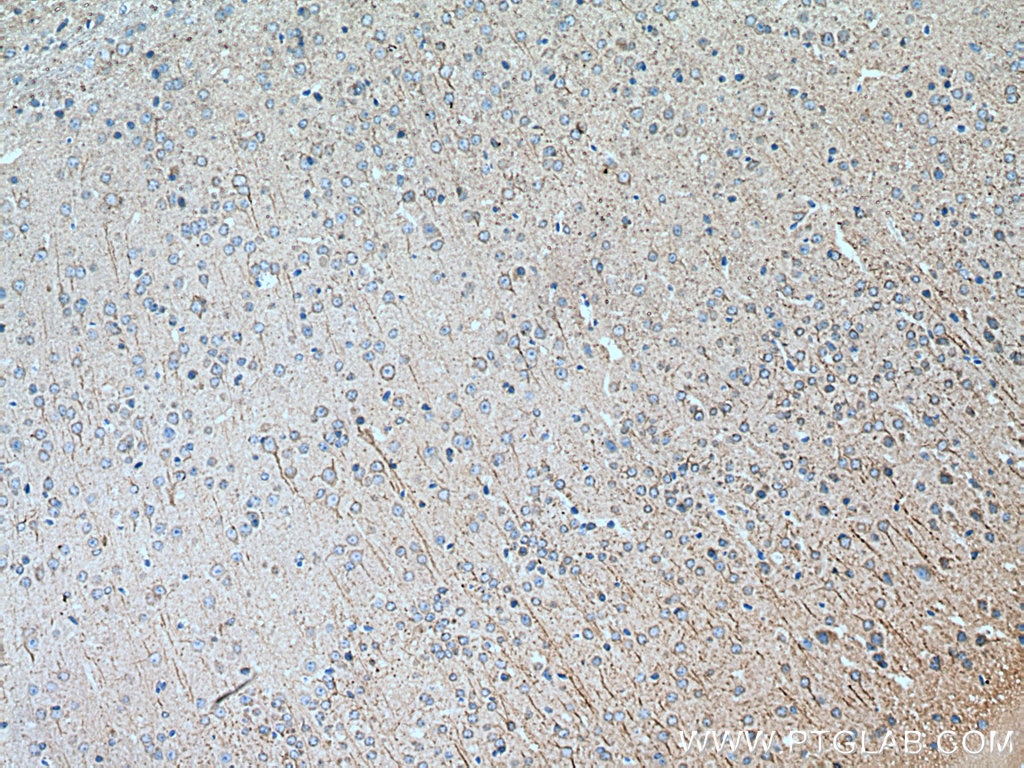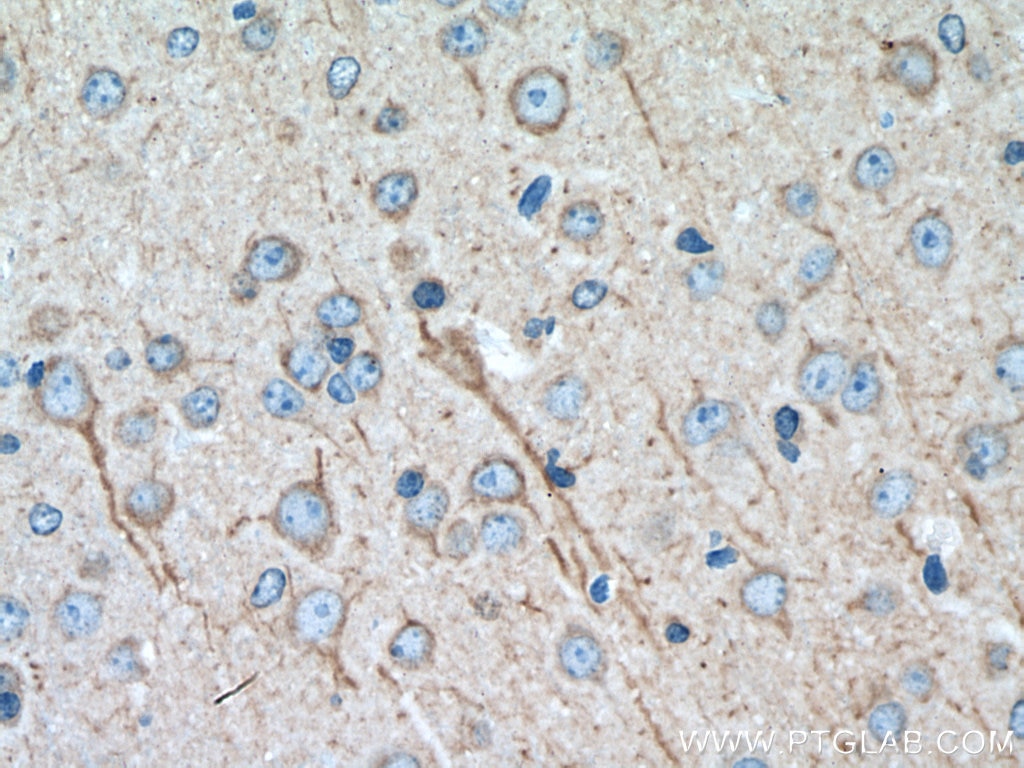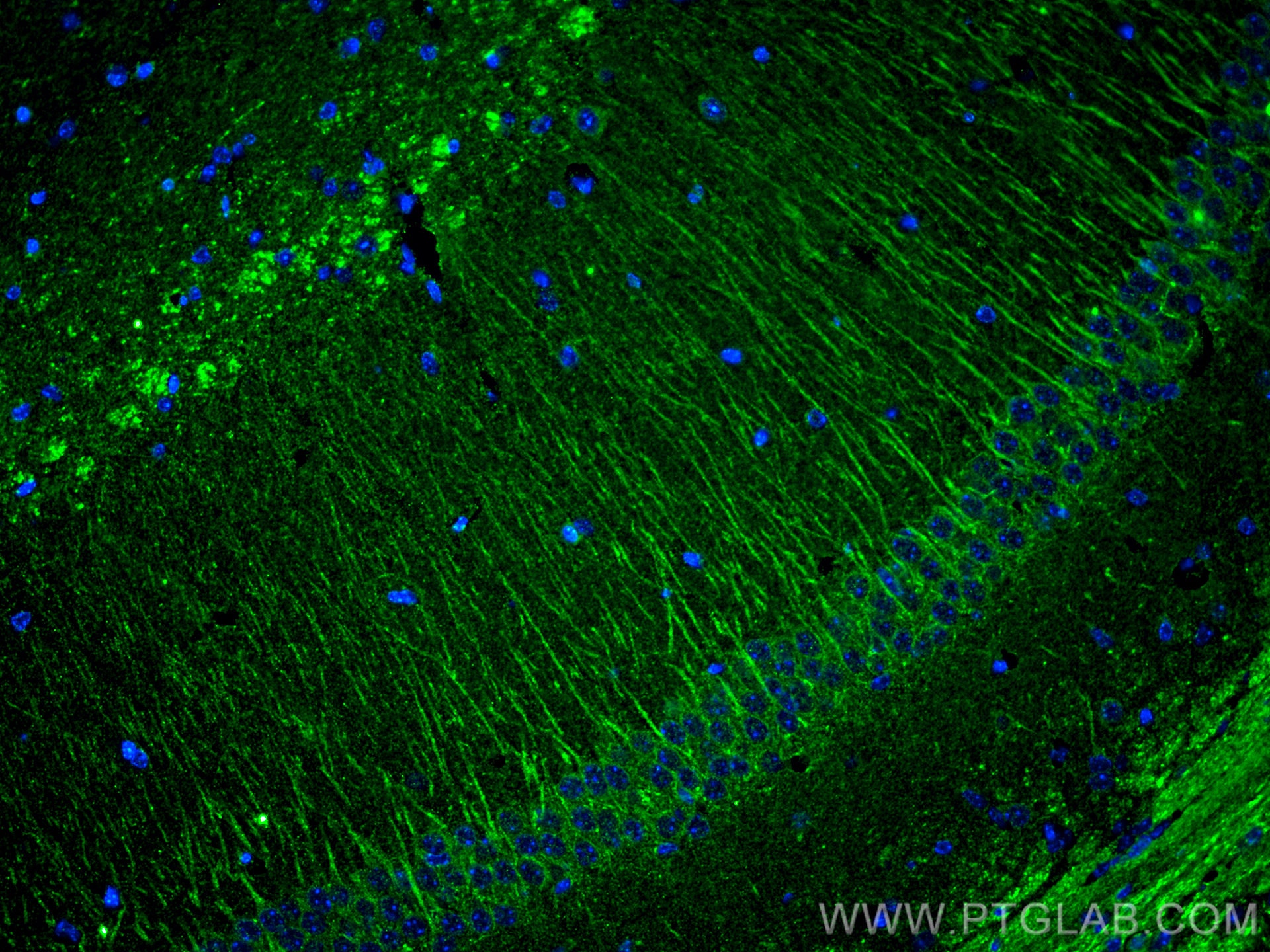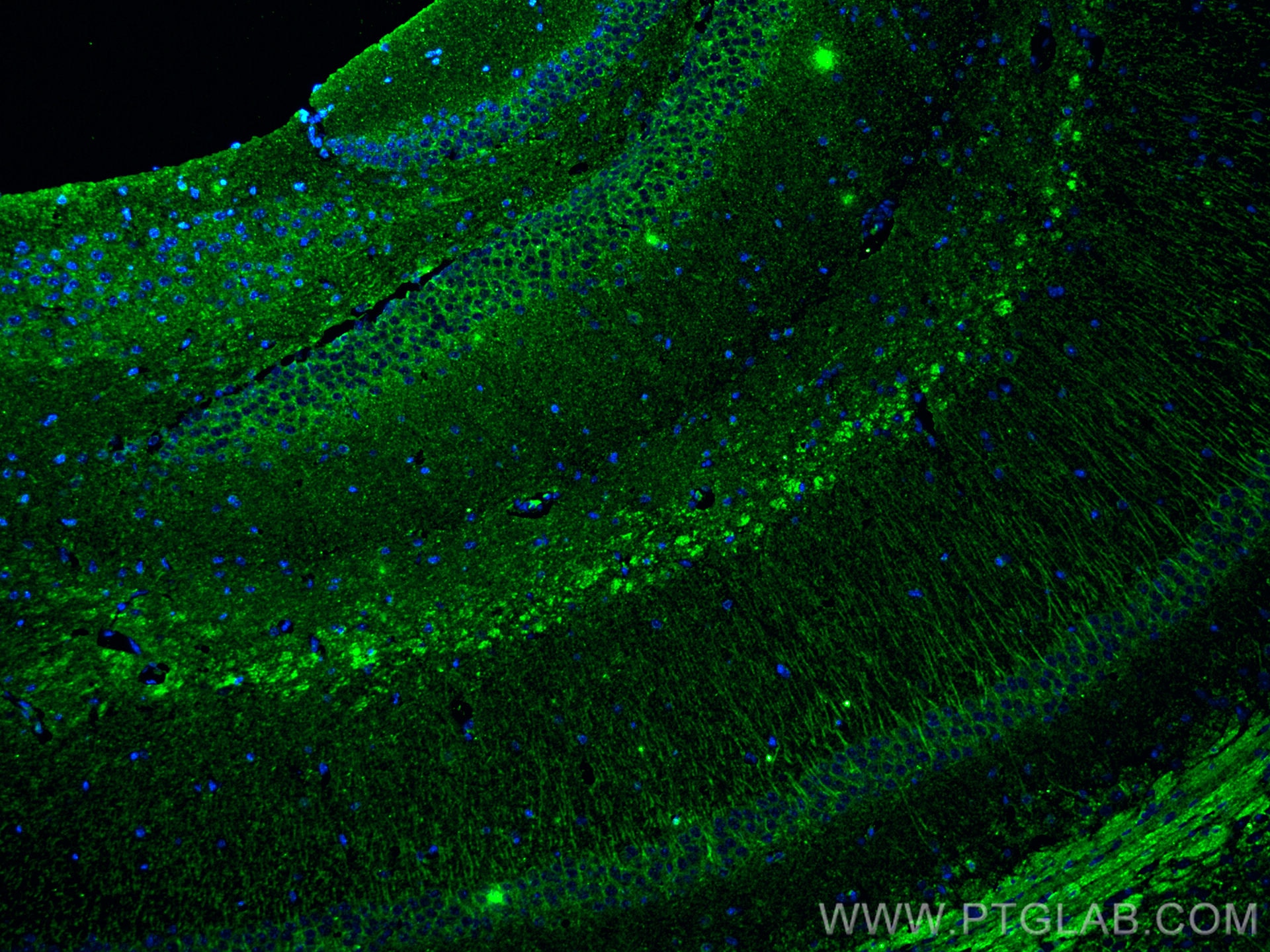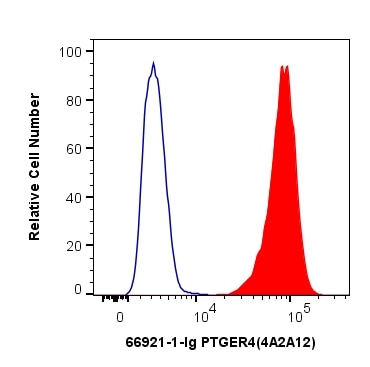Anticorps Monoclonal anti-PTGER4
PTGER4 Monoclonal Antibody for WB, IHC, IF-P, FC (Intra), ELISA
Hôte / Isotype
Mouse / IgG2b
Réactivité testée
Humain, porc, rat, souris
Applications
WB, IHC, IF-P, FC (Intra), ELISA
Conjugaison
Non conjugué
CloneNo.
4A2A12
N° de cat : 66921-1-Ig
Synonymes
Galerie de données de validation
Applications testées
| Résultats positifs en WB | tissu cérébral de porc, cellules Jurkat, cellules K-562, tissu cérébral de rat, tissu cérébral de souris |
| Résultats positifs en IHC | tissu d'hyperplasie de la prostate humain, tissu cérébral de souris il est suggéré de démasquer l'antigène avec un tampon de TE buffer pH 9.0; (*) À défaut, 'le démasquage de l'antigène peut être 'effectué avec un tampon citrate pH 6,0. |
| Résultats positifs en IF-P | tissu cérébral de souris, |
| Résultats positifs en FC (Intra) | cellules HepG2, |
Dilution recommandée
| Application | Dilution |
|---|---|
| Western Blot (WB) | WB : 1:5000-1:50000 |
| Immunohistochimie (IHC) | IHC : 1:500-1:2000 |
| Immunofluorescence (IF)-P | IF-P : 1:200-1:800 |
| Flow Cytometry (FC) (INTRA) | FC (INTRA) : 0.40 ug per 10^6 cells in a 100 µl suspension |
| It is recommended that this reagent should be titrated in each testing system to obtain optimal results. | |
| Sample-dependent, check data in validation data gallery | |
Applications publiées
| WB | See 3 publications below |
| IHC | See 1 publications below |
Informations sur le produit
66921-1-Ig cible PTGER4 dans les applications de WB, IHC, IF-P, FC (Intra), ELISA et montre une réactivité avec des échantillons Humain, porc, rat, souris
| Réactivité | Humain, porc, rat, souris |
| Réactivité citée | Humain, souris |
| Hôte / Isotype | Mouse / IgG2b |
| Clonalité | Monoclonal |
| Type | Anticorps |
| Immunogène | PTGER4 Protéine recombinante Ag19262 |
| Nom complet | prostaglandin E receptor 4 (subtype EP4) |
| Masse moléculaire calculée | 488 aa, 53 kDa |
| Poids moléculaire observé | 53 kDa |
| Numéro d’acquisition GenBank | BC101534 |
| Symbole du gène | PTGER4 |
| Identification du gène (NCBI) | 5734 |
| Conjugaison | Non conjugué |
| Forme | Liquide |
| Méthode de purification | Purification par protéine A |
| Tampon de stockage | PBS with 0.02% sodium azide and 50% glycerol |
| Conditions de stockage | Stocker à -20°C. Stable pendant un an après l'expédition. L'aliquotage n'est pas nécessaire pour le stockage à -20oC Les 20ul contiennent 0,1% de BSA. |
Informations générales
PTGER4 (Prostaglandin E2 receptor EP4 subtype, also known as EP4R) is a member of the G-protein coupled receptor family. This protein is one of four receptors identified for prostaglandin E2 (PGE2). May play an important role in regulating renal hemodynamics, intestinal epithelial transport, adrenal aldosterone secretion, and uterine function.
Protocole
| Product Specific Protocols | |
|---|---|
| WB protocol for PTGER4 antibody 66921-1-Ig | Download protocol |
| IHC protocol for PTGER4 antibody 66921-1-Ig | Download protocol |
| IF protocol for PTGER4 antibody 66921-1-Ig | Download protocol |
| FC protocol for PTGER4 antibody 66921-1-Ig | Download protocol |
| Standard Protocols | |
|---|---|
| Click here to view our Standard Protocols |
Publications
| Species | Application | Title |
|---|---|---|
Signal Transduct Target Ther m6A demethylase ALKBH5 is required for antibacterial innate defense by intrinsic motivation of neutrophil migration. | ||
J Mol Med (Berl) Vav2 promotes ductus arteriosus anatomic closure via the remodeling of smooth muscle cells by Rac1 activation | ||
Nat Commun Post-resolution macrophages shape long-term tissue immunity and integrity in a mouse model of pneumococcal pneumonia | ||
Cell Metab m6A mRNA methylation in brown fat regulates systemic insulin sensitivity via an inter-organ prostaglandin signaling axis independent of UCP1 | ||
Nat Neurosci NG2 glia protect against prion neurotoxicity by inhibiting microglia-to-neuron prostaglandin E2 signaling |
